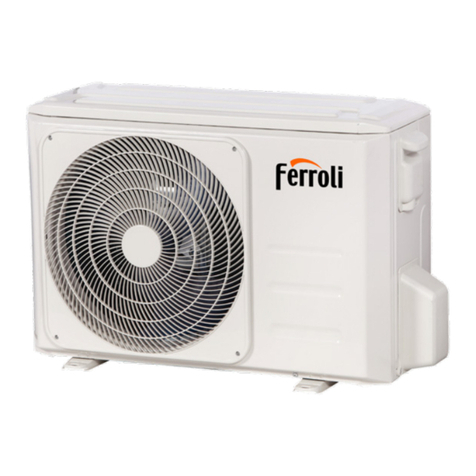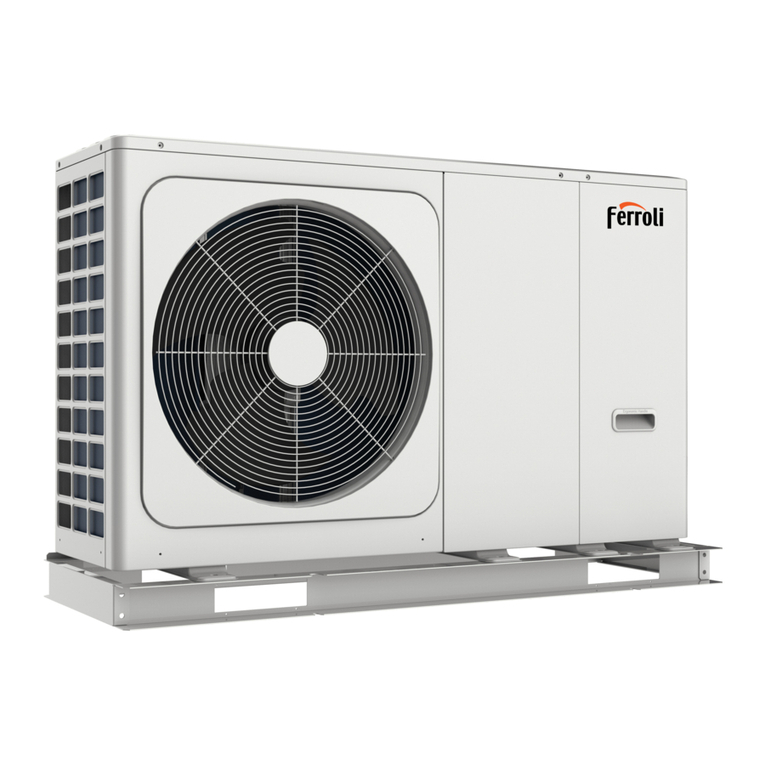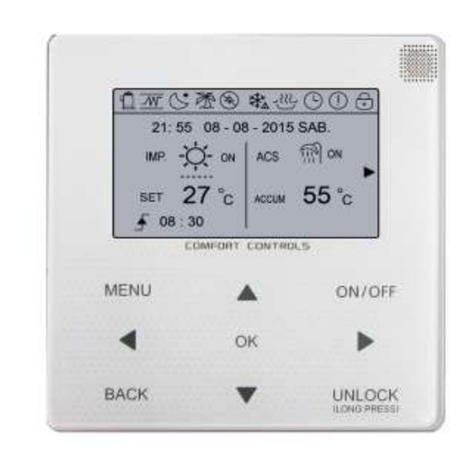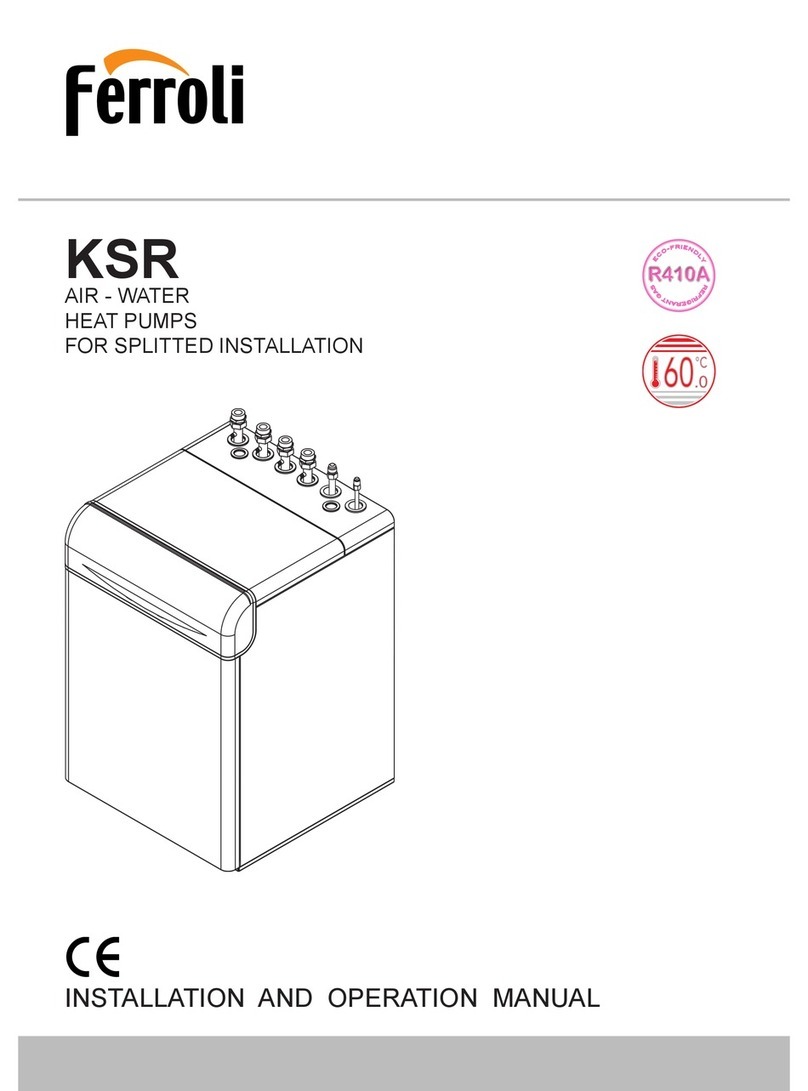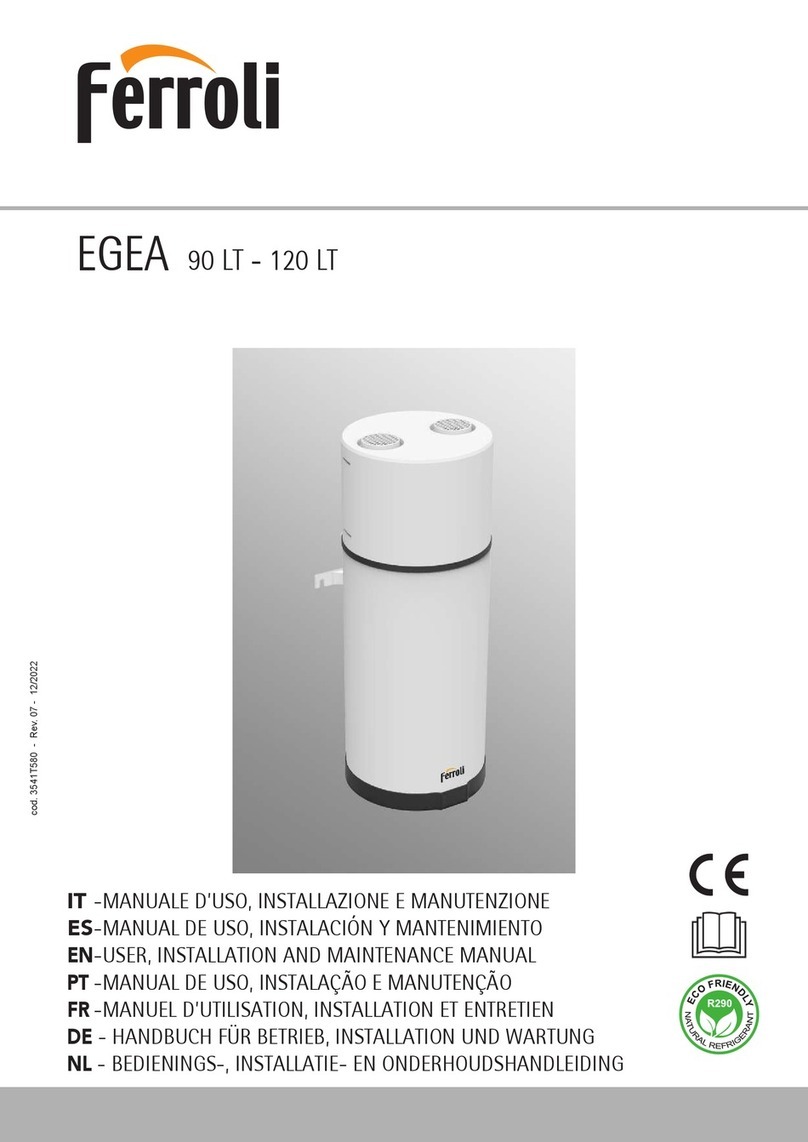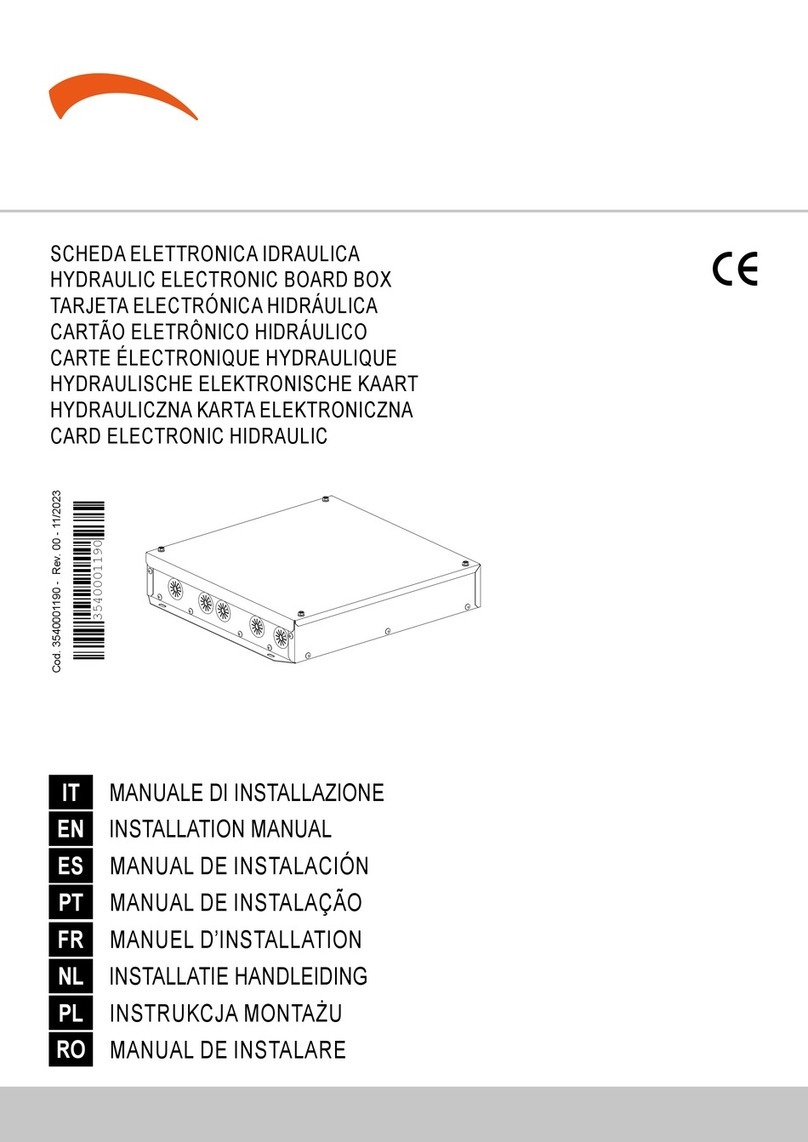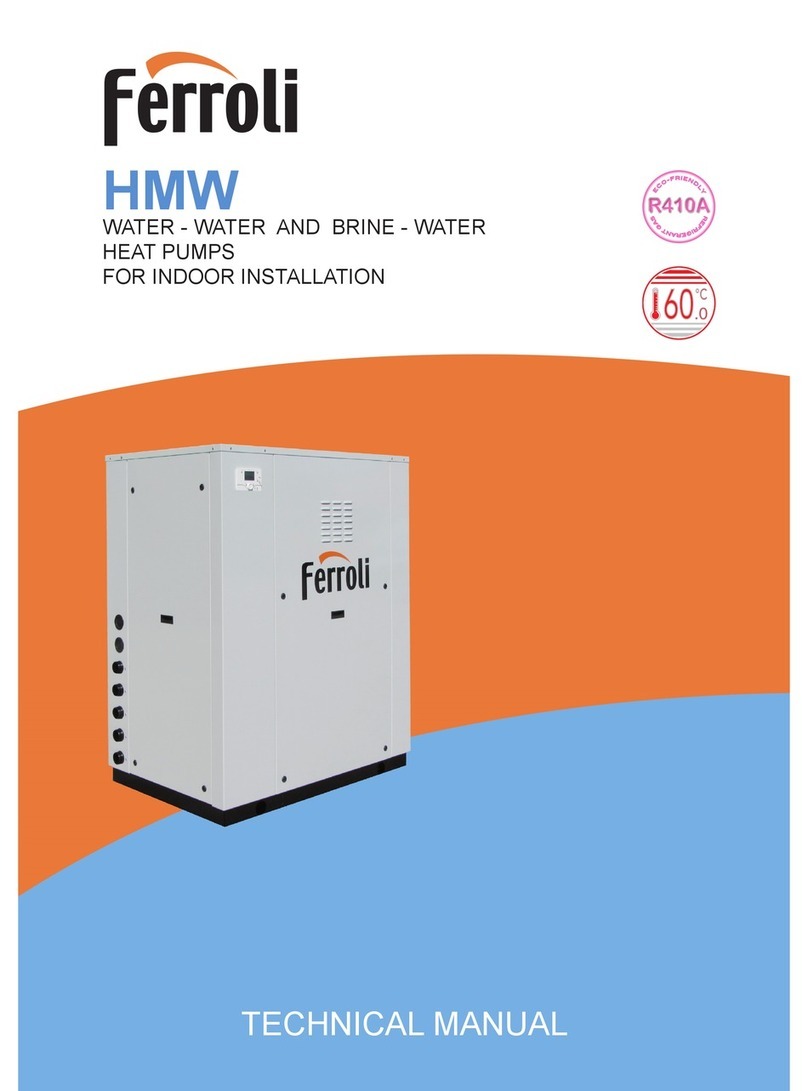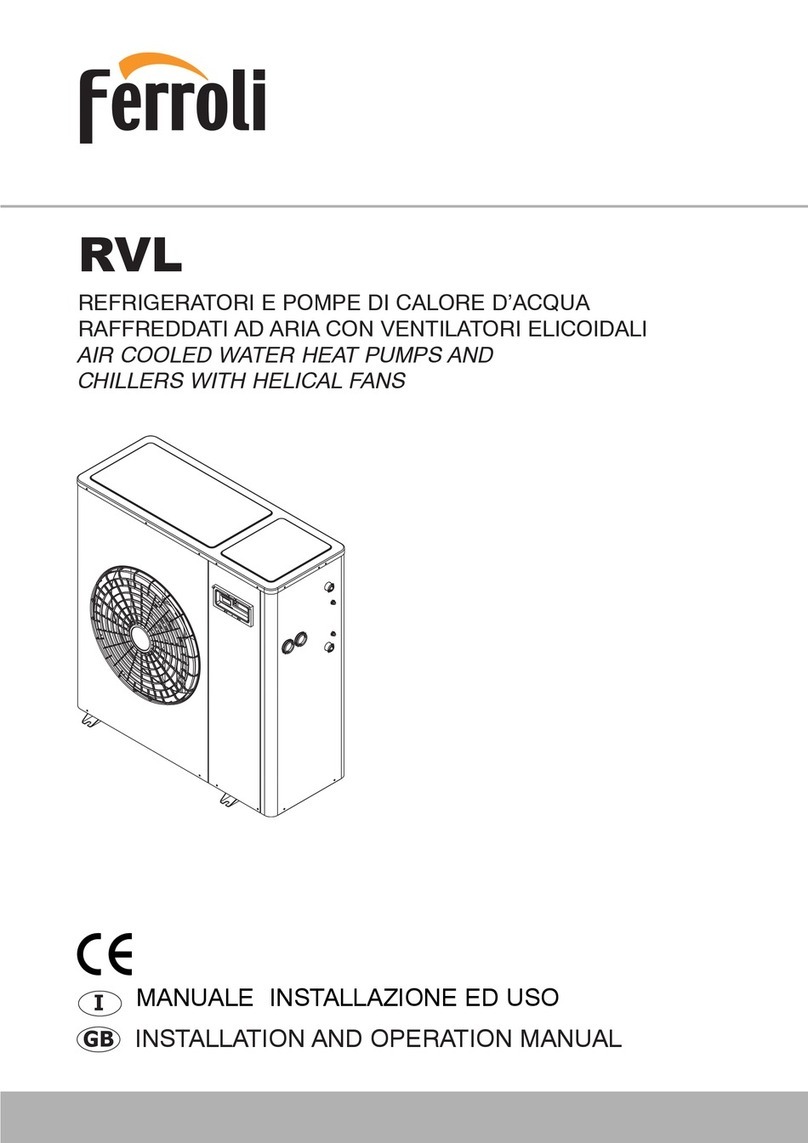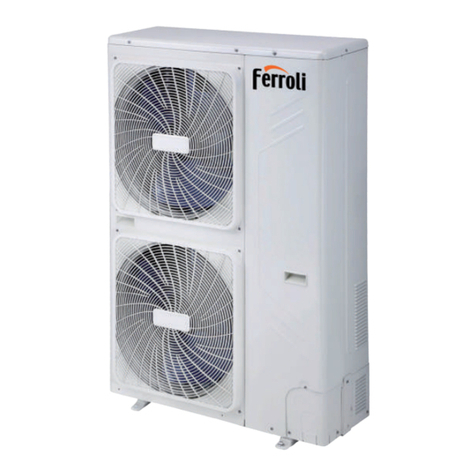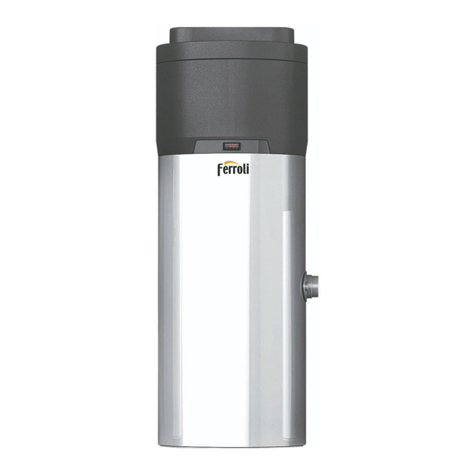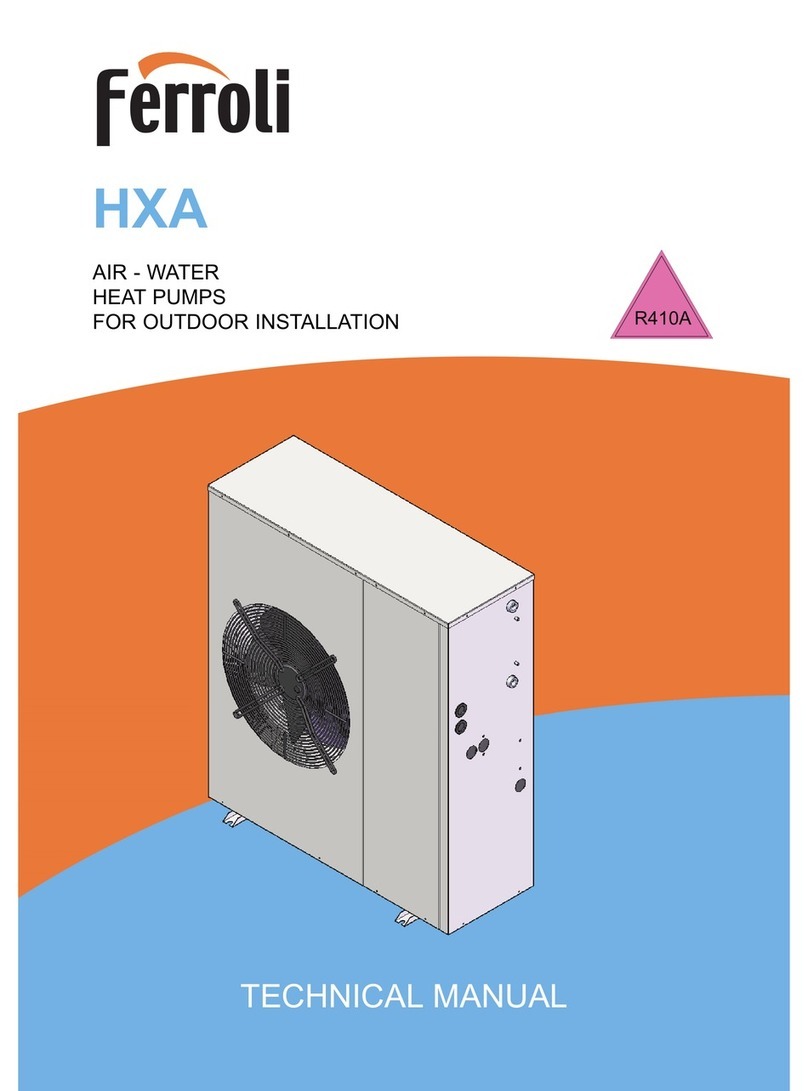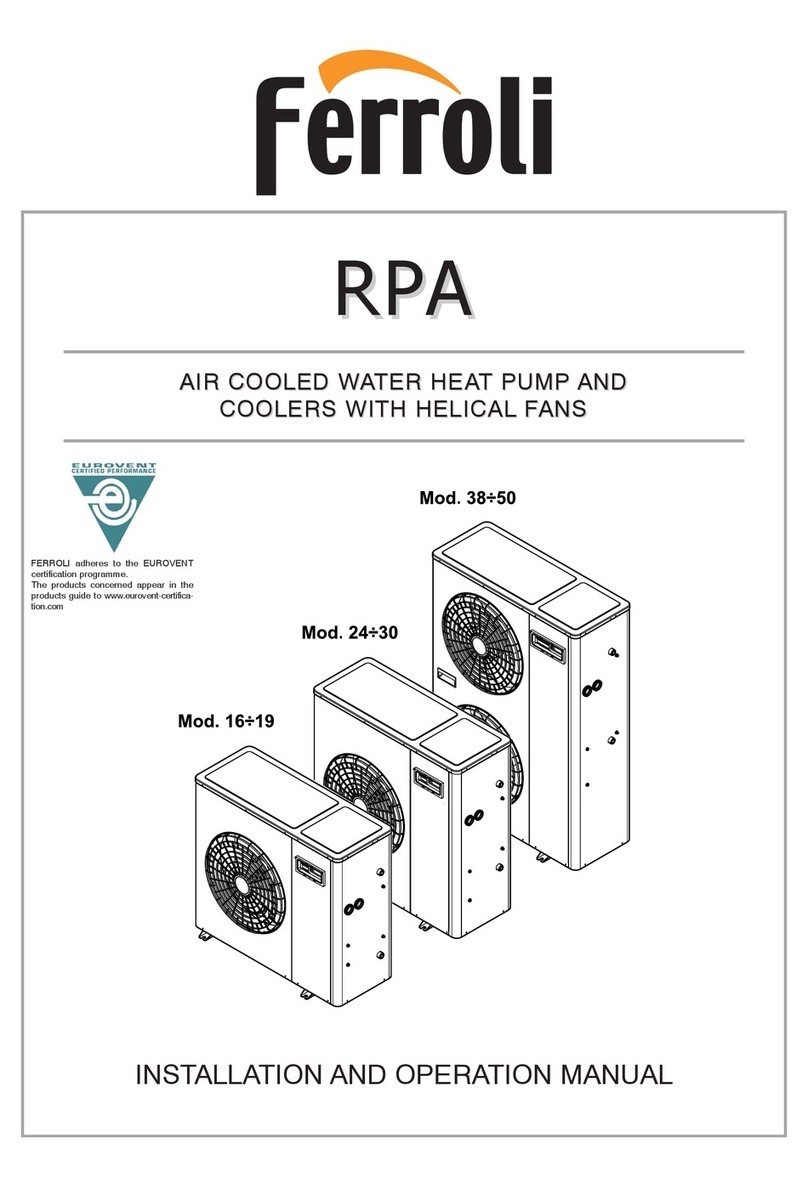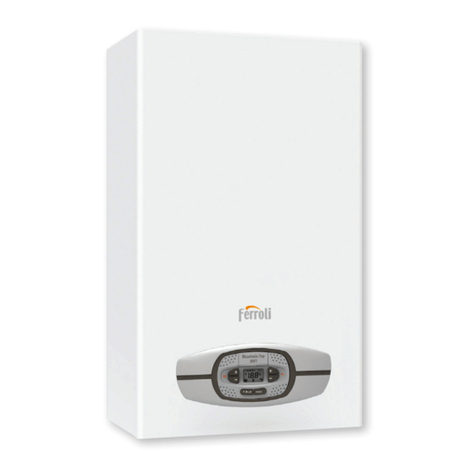
7
1.9 Basic safety rules
Using products that require electricity and water require some basic safety rules to be complied
with, such as:
It is prohibited to operate the unit before having disconnecting it from the power supply by
setting the main switch to "off".
It is prohibited to modify the safety devices or the settings without authorisation and
instructions from the manufacturer of the unit.
It is prohibited to pull, detach or twist the electrical cables coming from the unit, even if it
is disconnected from the power supply.
It is strictly prohibited to touch any moving parts, stand between them or introduce
pointed objects through the grids.
It is prohibited to use gas and water pipes to earth the unit.
It is prohibited to touch the unit when barefoot or with wet or damp parts of the body.
It is prohibited to stand on the unit, sit down on it and/or lean any type of object against it.
It is prohibited to dispose of and leave the packaging material in the reach of children as it
can be a potential source of danger.
It is prohibited for children or unassisted disabled persons to use the unit.
It is prohibited to release R410A in the atmosphere: R410A is a fluorinated greenhouse gas
referred to in the Kyoto Protocol with a Global Warming Potential (GWP) = 2088.
1.10 User guidelines
• Keep this manual together with the wiring diagram in a place that is accessible by the
operator.
• Take note of the unit identification data so as to provide them to the service centre when
required (see the "Machine identification" paragraph).
• It is recommended to keep track of the operations carried out on the unit, so as to facilitate any
troubleshooting.
• Request the installer to be trained on:
- switching on/shut-down;
- shutting down for long periods;
- maintenance;
- what to do/not to do in case of a fault.
In case of a fault or malfunction:
- immediately disable the unit without resetting the alarm;
- verify the type of alarm to notify the service centre;
- contact an authorised service centre;
- request original spare parts.
1.11 Machine description
1.11.1 Features
Frame.
Self-supporting frame in peraluman and galvanized steel frame, featuring rubber shock absorbers
on the base. Stainless steel screws.
Compressors.
Scroll DC Inverter three phase with oil sight glass. They are fitted with internal overheat protec
tion and crankcase heater, installed on rubber shock absorbers.
Fans.
Axial fan type with low rpm and special wing profile, directly coupled to external rotor motors.
A safety fan guard is fitted on the air flow discharge.
Condenser.
Made of a finned coil with copper pipes and aluminium fins. Complete with drain pan for hea
t pump version only.
Evaporator.
AISI 316 stainless steel braze welded plate evaporator. On the heat pump units an antifreeze he
ater is installed by standard.
Electrical board.
The electrical board includes: main switch with door safety interlock; fuses; thermal protection
relays on compressors; thermocontacts for fans; remote ON/OFF; summer/winter switching;dom
estic hot water and external 3-way valve management.
Microprocessor.
For the automatic control of the following functions: water temperature regulation, antifreeze
protection, compressor time control, alarms reset, alarms management and operating led, ala
rm cumulative contact for remote signal, local or remote cooling/heating cycle switching on he
at pump units, visual system with digital display: running cycle (cooling or heating), com
pressordemand/on, outlet water temperature, set point and differential setting, alarm code.
Proportional electronic device.
It attenuates the sound level of the unit using a continuous regulation of fan rotation speed.
This device also allows the cooling operation of the unit to outdoor air temperatures of -20 °C.
Control logic of the Inverter Scroll compressor.
Through the Inverter it adjusts the power supplied by the compressor as a function of the
system’s thermal load, the condensing pressure and the outdoor air temperature.
The control system, thanks to the Inverter technology, continuously monitors and adapts the
performance of the Inverter compressor, circulator and fans in order to grant the best operating
conditions of the unit. Thanks to Inverter logic, they are able to operate also with low water
content in the unit, thus making the use of the inertial tank superfluous.
Circuito frigorifero versione solo freddo.
Made of copper pipe, it includes the following components on all models: electronic thermostatic
expansion valve; filter drier; liquid and humidity indicator; high pressure switch (with fixed
setting); high and low pressure transducers.
Circuito idraulico versione solo freddo.
It includes: evaporator; temperature sensor; antifreeze sensor; water differential pressure switch;
manual air vent; high efficiency EC Inverter circulator; expansion vessel; water drain; safety valve.
Circuito frigorifero versione pompa di calore.
The heat pump version, in addition to the components installed on the cooling only version,
includes: 4-way reversing valve; suction liquid separator; liquid receiver; check valves.
Circuito idraulico versione pompa di calore.
It includes: evaporator; temperature sensor; antifreeze sensor; water differential pressure switch;
manual air vent; high efficiency EC Inverter circulator; expansion vessel; water drain; safety valve.
